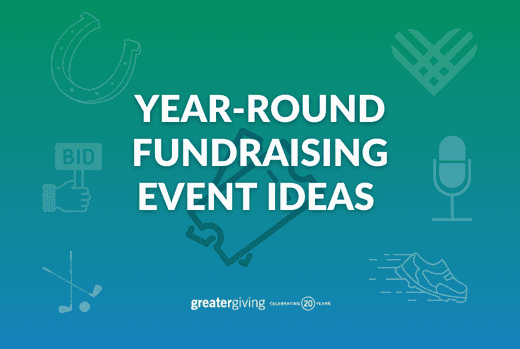Online Fundraising: Proven Tactics to Raise More Funds for Your Nonprofit
Online Fundraising: Proven Tactics to Raise More Funds for Your Nonprofit
Blog Article
The Duty of Neighborhood Engagement in Nonprofit Fundraising: Structure Lasting Relationships for Sustainable Support
Neighborhood interaction is increasingly identified as a critical element of effective not-for-profit fundraising. By promoting real relationships with regional stakeholders, organizations can cultivate count on and commitment, which are essential for lasting support. Nevertheless, the methods and approaches used to engage communities differ extensively, elevating vital concerns about efficiency and impact. What are the most effective methods for growing these vital connections, and how can nonprofits determine their success in this sector? Comprehending these characteristics might significantly influence the future of fundraising initiatives and the general mission of nonprofit organizations.
Recognizing Community Engagement
Neighborhood engagement is an important element of effective not-for-profit fundraising efforts. It describes the methods and activities that organizations utilize to get in touch with their neighborhood communities, fostering connections that are equally valuable. Comprehending community engagement involves recognizing its complex nature, that includes collaboration, participation, and outreach. Nonprofits must determine crucial stakeholders-- such as neighborhood members, local businesses, and other organizations-- to create reliable interaction strategies.
Reliable neighborhood engagement is asserted on active listening and responsiveness to the needs and passions of the neighborhood. This process involves getting responses, understanding neighborhood dynamics, and ensuring that the company's mission lines up with regional top priorities. Engaging the neighborhood can take numerous forms, including public conferences, volunteer chances, and collaboration efforts, each created to urge involvement and investment in the company's goals.
Moreover, community engagement should be come close to as a recurring dialogue as opposed to a single initiative. By promoting an inclusive atmosphere where area voices are heard and valued, nonprofits can build a solid structure for future fundraising endeavors. Eventually, a deep understanding of neighborhood involvement empowers organizations to develop genuine links that enhance their overall effectiveness and sustainability.
Benefits of Solid Relationships
Solid connections created with community engagement yield many benefits for nonprofit fundraising efforts. First and primary, these partnerships foster trust fund and integrity, important elements in encouraging benefactors to add. When possible supporters see a not-for-profit actively entailed in their community, they are more probable to rely on its goal and impact.

Moreover, these partnerships help with efficient communication. Nonprofits can utilize their connections to share tales of impact, updates, and requires, ensuring that advocates continue to be enlightened and involved. This open line of interaction not only enhances bonds yet additionally encourages referral promo, expanding the nonprofit's reach.
Last but not least, solid area ties can bring in new companions and sponsors. Companies and people are extra likely to line up with companies that show meaningful area participation, providing extra sources and assistance that can dramatically improve fundraising capabilities. Hence, growing durable partnerships through neighborhood engagement is important to a nonprofit's long-term fundraising success.
Techniques for Efficient Involvement
How can nonprofits properly involve their neighborhoods to improve fundraising efforts? Establishing targeted techniques is crucial for cultivating purposeful links. Initially, leveraging social networks platforms enables organizations to share their mission dynamically and interactively, reaching a wider target market. Routine updates, involving content, and calls-to-action can galvanize community interest and involvement.
Second, holding neighborhood events, such as workshops, volunteer chances, or fundraising drives, promotes in person interaction, allowing nonprofits to display their influence and initiatives. These events not just increase funds however likewise cultivate relationships and permit neighborhood members to engage straight with the cause.
Third, executing personalized interaction techniques can enhance involvement. Customizing messages to certain donor segments based upon rate of interests and past contributions fosters a feeling of belonging and investment in the company's goal.
Last but not least, creating collaborations with neighborhood organizations and community leaders can magnify outreach initiatives. Collaborative campaigns can enhance exposure and reputation, showing a collective dedication to the community's well-being. By incorporating these methods, nonprofits can build enduring partnerships that improve fundraising initiatives and drive lasting support.
Determining Involvement Success
While engaging the area is critical for successful nonprofit fundraising, measuring the performance of these interaction initiatives is similarly vital. Establishing clear metrics allows companies to analyze exactly how well they are getting in touch with their target market and Going Here attaining their fundraising goals. Secret efficiency indicators (KPIs) such as donor retention rates, volunteer involvement degrees, and involvement on social media platforms give tangible data for examination.

Consistently examining these metrics makes it possible for organizations to pivot their techniques when needed, making sure that area interaction stays aligned with their overall goal. Moreover, sharing these outcomes with stakeholders fosters transparency and constructs trust, encouraging more neighborhood involvement. Inevitably, a durable measurement framework not only notifies future fundraising campaigns however likewise strengthens the relationship between the not-for-profit and its supporters, laying the foundation for sustainable success.
Study in Area Effect
Many study show the extensive influence that community interaction can have on not-for-profit fundraising success. One notable instance is the "Food for Idea" effort, where a neighborhood food financial institution partnered Our site with companies and schools to host area dinners. These events not just raised funds yet also fostered a sense of belonging amongst participants, considerably raising contributor retention rates.
One more engaging situation is the "Environment-friendly Spaces Job," which involved neighborhood homeowners in the revitalization of city parks. This initiative not just garnered economic assistance from local services yet also grew a volunteer base that added to continuous upkeep and programming. The sense of possession and satisfaction among neighborhood participants translated into continual payments.
In the realm of arts, the "Art for All" campaign successfully involved regional artists and clients to develop joint art setups, resulting in boosted presence and donations for a neighborhood arts not-for-profit.
These examples highlight that when nonprofits prioritize neighborhood involvement, they can develop enduring connections that improve fundraising efforts, making sure lasting support and promoting a vibrant community society. Such cases show that neighborhood involvement is not merely an approach yet a crucial pillar of nonprofit success.
Verdict
In verdict, community involvement is essential to the success of nonprofit fundraising efforts. Ultimately, check out here a durable structure of community assistance not just enhances fundraising potential but additionally cultivates a society of partnership, important for achieving lasting business objectives and sustaining purposeful influence. fundraising consultant.
Nonprofits must determine essential stakeholders-- such as community participants, regional businesses, and various other organizations-- to produce effective involvement methods.

In conclusion, community interaction is essential to the success of not-for-profit fundraising initiatives.
Report this page